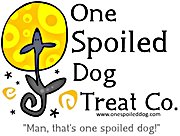Grooming is more than just a way to keep your dog looking neat. It's a key part of their overall health and well-being. Whether your pup is fluffy and full of curls or has a sleek, low-maintenance coat, the right grooming products can make a big difference. With so many choices available, picking the best ones can feel a little overwhelming.
This guide will walk you through how to choose the best grooming products based on your dog’s specific needs.
Why Grooming Matters
Regular grooming isn’t just about appearance. It plays a big role in your dog’s comfort and health. Here’s why it matters:
- It removes dirt, loose hair, and allergens that can irritate your dog’s skin.
- It helps reduce shedding, which keeps your home cleaner.
- It gives you a chance to spot any lumps, parasites, or infections early on.
- It keeps your dog feeling fresh and comfortable, especially if they have long hair or skin folds.
Now that we’ve covered the importance of grooming, let’s dive into how to find the right products.
Picking the Right Shampoo and Conditioner
1. Match Products to Your Dog’s Coat and Skin Type
Different dogs have different grooming needs depending on their coat type.
- Short-haired breeds like Boxers or Beagles usually do well with a gentle, all-purpose shampoo that doesn’t strip away natural oils.
- Long-haired breeds such as Golden Retrievers or Shih Tzus benefit from moisturizing shampoos and conditioners to prevent tangles and keep the coat soft.
- Curly or wiry coats found in breeds like Poodles or Schnauzers need products that enhance texture and manage frizz.
- Double-coated dogs like Huskies or German Shepherds often need de-shedding shampoos to control excess fur.
2. Consider Skin Sensitivities
If your dog has sensitive skin or allergies, look for:
- Hypoallergenic shampoos with simple, natural ingredients.
- Oatmeal-based formulas that help soothe dry or itchy skin.
- Medicated shampoos, but only if recommended by your vet for issues like dermatitis or fungal infections.
3. Avoid Harmful Ingredients
Some grooming products contain chemicals that can irritate your dog’s skin. Try to avoid:
- Artificial colors or fragrances that may trigger allergies.
- Parabens and sulfates, which can dry out the skin.
- Alcohol-based formulas, which are harsh and dehydrating.
4. Waterless and Deodorizing Options
Between baths, a waterless shampoo or deodorizing spray can help your dog stay fresh without over-drying their skin. These are handy for dogs that don’t love bath time or for colder months when frequent washing isn’t ideal.
Choosing the Right Brush for Your Dog’s Coat
Brushing your dog helps remove loose fur, prevents mats, and spreads natural oils through their coat. The right brush depends on their coat type:
- Short-haired dogs do best with rubber curry brushes or soft bristles to remove dirt and hair.
- Medium to long-haired breeds benefit from slicker brushes that help with detangling.
- Double-coated dogs need de-shedding tools like the Furminator to reach the undercoat.
- Curly-haired breeds should be brushed with a pin brush or comb to keep curls in check.
How often you brush depends on your dog. Some need it daily, while others only require a few sessions per week.
Nail Care: Clippers vs. Grinders
Keeping your dog’s nails trimmed helps prevent pain and posture issues. When choosing nail tools, consider:
- Clippers
- Guillotine-style clippers are good for smaller dogs.
- Scissor-style clippers offer more control for larger dogs with thicker nails.
- Grinders
- Great for smoothing edges and a good option if your dog is nervous around clippers.
- Ideal for dogs with dark nails, where it’s hard to see the quick.
Keep styptic powder or cornstarch on hand in case you accidentally clip too close.
Caring for Ears and Eyes
1. Ear Cleaning
Some dogs are prone to ear infections, especially those with floppy ears. Use:
- Vet-recommended cleaning solutions made with mild ingredients.
- Alcohol-free formulas that won’t dry out the ear canal.
2. Eye Care and Tear Stains
Dogs like Maltese or Poodles often get tear stains. To manage this:
- Use eye wipes made for dogs to gently clean around the eyes.
- Steer clear of anything that contains harsh chemicals near sensitive areas.
Paw and Coat Protection
1. Paw Balms
Paw pads can get cracked or irritated from cold sidewalks or hot pavement. A beeswax-based balm helps protect and moisturize them.
2. Leave-in Conditioners
For dogs with longer coats, detangling sprays or leave-in conditioners can help keep the fur smooth and tangle-free between washes.
Dental Health: Don’t Skip Oral Care
Oral hygiene is often forgotten, but it’s essential for preventing bad breath and gum disease.
- Use toothpaste made for dogs (never use human toothpaste, which can be toxic).
- Choose a soft-bristled toothbrush or a finger brush for comfort and control.
- Add dental chews or water additives to support daily cleaning routines.
Safety First
- Only use grooming products designed specifically for dogs.
- Always check labels and avoid harsh chemicals.
- If your dog has allergies or sensitive skin, talk to your vet before trying something new.
- Introduce new products slowly to see how your dog responds.
Final Thoughts
Grooming isn’t just about keeping your dog clean. It plays a big role in their comfort and overall health. The right grooming products can make the whole process easier, more effective, and even enjoyable. By choosing tools that match your dog’s unique coat and skin needs, you’ll help them feel their best while strengthening your bond along the way.
